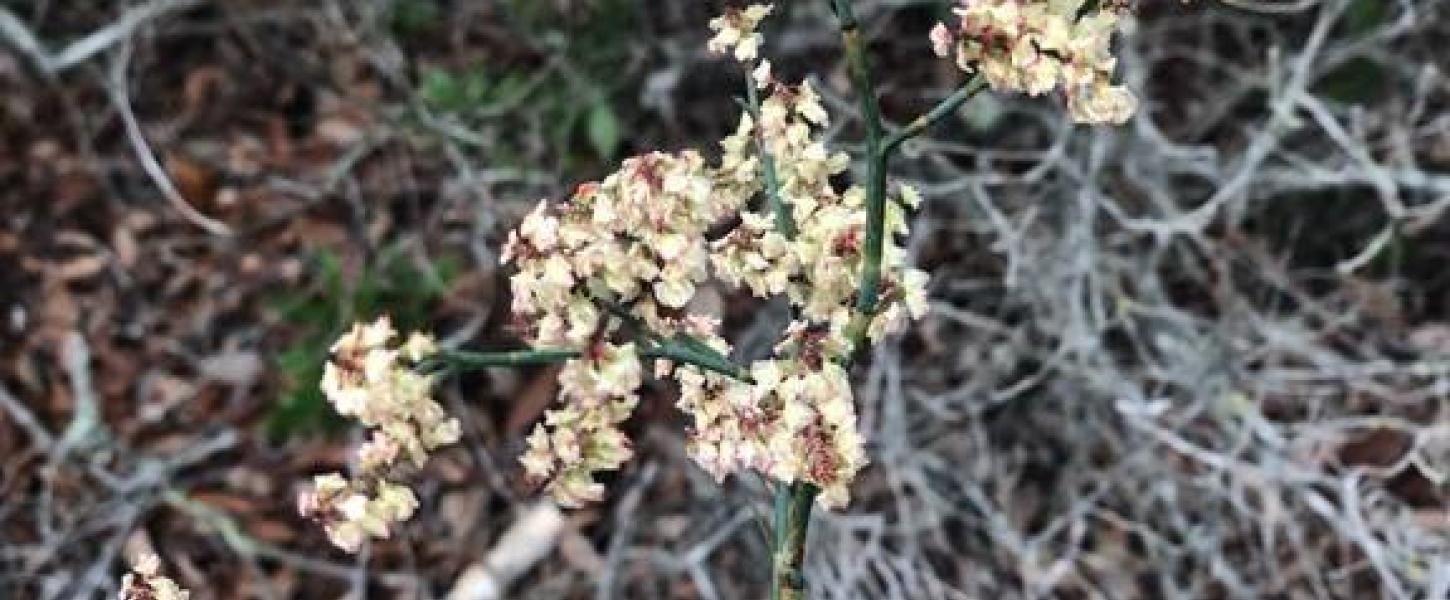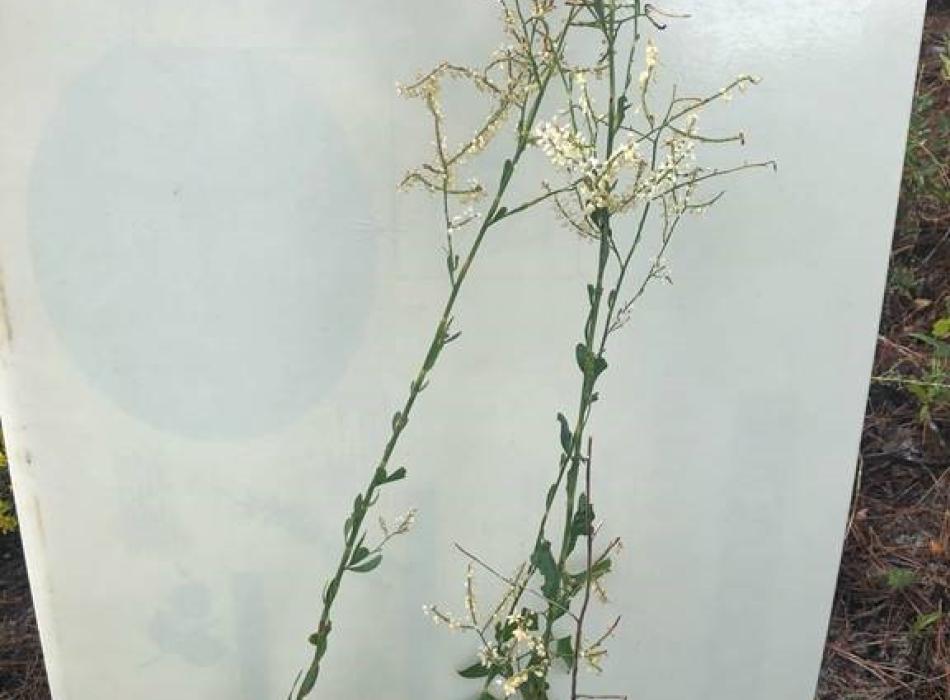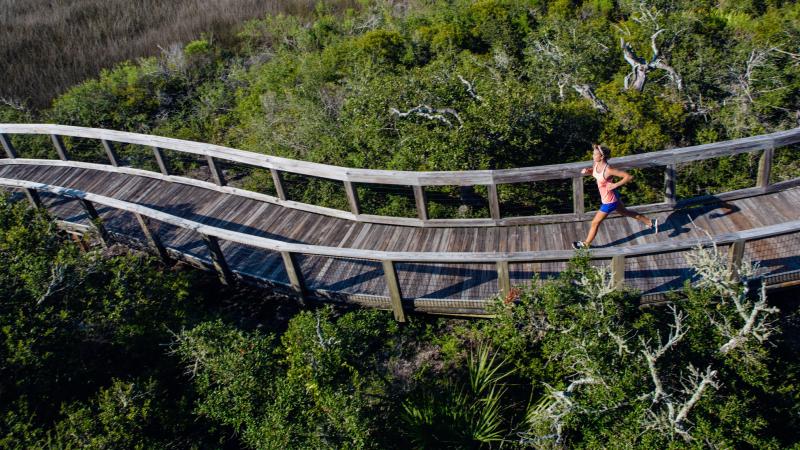Large-Leaf Jointweed at Big Lagoon

The large-leaf jointweed is found along the edges of coastal scrub oaks and in the scrubby flatwoods natural communities in sandy areas with plenty of sunlight. The Florida Natural Areas Inventory ranks the plant as G3/S3, which indicates the plant is very rare, and the plant is listed as threatened by the state of Florida. Large-leaf jointweed grows to about 3 feet tall, blooms from October to mid-November, and ranges from white- to pink- to red-colored flowers.
A major threat to large-leaf jointweed is habitat loss. Much of its natural habitat has been repurposed for development along the high ridges of sand dune that are suitable for building.
Large-leaf jointweed thrives in unshaded areas among coastal scrub and scrubby flatwoods with open canopies maintained by regular fire intervals of three to five years. Large-leaf jointweed is often found in clusters of five to 50 individuals with a few larger clusters of upwards of 150 individuals along fire breaks, hiking paths and the outer edges of scrub patches.
Big Lagoon State Park proudly supports the largest population of large-leaf jointweed with upward of 2,000 individual plants, according to data collected from October to November 2019, which accounts for 20 percent of the total Florida population. Coastal areas that are protected from development and maintained with regular fire intervals are key to the survival of the beautiful large-leaf jointweed.



